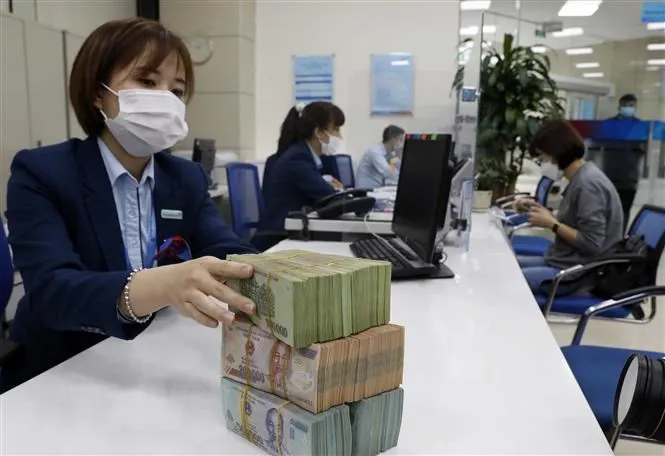
This move is meant to support enterprises and individuals to restore production and revive their businesses to promote faster growth and effectively overcome the low credit growth seen in the last five months.
The State Bank of Vietnam has announced that it will reduce operating interest rates from 19 June. In this, the refinancing interest rate will decrease from 5 percent per year to 4.5 percent per year; the discount rate will go down from 3.5 percent per year to 3 percent per year; and the ceiling interest rate for term deposits will go down from 3.5 percent per year to 3 percent per year. From the middle of March to now, this is the fourth time that the State Bank of Vietnam has reduced the operating interest rate.
The State Bank of Vietnam cut the operating interest rate for the first time on 16 March, after the Government issued Resolution 31/NQ-CP on 7 March and requested a reduction in lending interest rate. This was meant to increase the possibility of access to capital by people and businesses when the statistics on the situation of enterprises in the first two months of the year still faced many difficulties and challenges. It seems that the order to reduce interest rates from the State Bank of Vietnam has not yet been put into force in commercial banks, although the Government has sent a message asking the State Bank of Vietnam to direct commercial banks to reduce lending rates.
In a meeting in April, Mr. Đào Minh Tú, Deputy Governor of the State Bank of Vietnam, named banks that still applied high-interest rates and proposed the reduction of interest rates. However, that order is not enough to bring the deposit interest rate to the optimal level to have a reasonable lending interest rate during difficult times for businesses. This is why the Government Office issued Document No. 225/TB-VPCP as mentioned above.
It can be seen that the interest rate issue is of grave concern to the Government, as it continually directs the State Bank of Vietnam to implement the policy of reducing interest rates even though inflation pressure is still present. In actuality, deposit interest rates have gradually decreased.
If at the end of 2022 and early 2023, the highest deposit interest rate climbed from 10 percent to 11.5 percent per year, now it has cooled down to about 8 percent to 9 percent per year. In this, the group of commercial banks with state capital has actively pushed the interest rate down more with the highest being only 6.8 percent per year since the first half of June. But in the group of joint stock commercial banks, as of mid-June, there are still many banks that announced deposit interest rates at over 8 percent per year such as ABBank, GPBank, BaoVietBank, Bac A Bank, and OceanBank.
When looking at the difference in the rate of reduction in deposit interest rates of state-owned commercial banks, large-scale joint-stock commercial banks, and small-scale joint-stock commercial banks, not all banks can adjust interest rates as desired by the management agency. A group of banks with poor liquidity cannot sharply reduce interest rates. This leads to the fact that interest rate competition to retain customers is still rampant in the banking system.
Therefore, although the lending interest rate has decreased to respond to the policy, it is still high compared to the ability of enterprises. The lending interest rate is usually calculated as a deposit interest rate plus a margin of 3 percent to 4 percent per year. When the deposit interest rate is 8 percent per year, the loan interest rate is around 11 percent to 12 percent per year. According to the calculation, the revenue of exporting enterprises can be very high, but the profit is only 5 percent to 8 percent. Moreover, lowering lending rates often has a delay of several months, because credit institutions have to continue to pay high deposit rates as committed for previous deposits. Hence at this time, there may still be subjects who will have to borrow money higher than the calculated interest rate.
Speaking at the plenary session of the National Assembly on the morning of 1 June, Mr. Nguyễn Thị Hồng, Governor of the State Bank of Vietnam, said that the need to reduce interest rates is the desire of businesses when borrowing capital. The National Assembly and Government are interested in directing and the State Bank of Vietnam also wants this. However, the interest rate reduction must be placed in the context of macroeconomic and monetary stability to ensure the safety of the banking system. However, there is a paradox that commercial banks say they are still red-eyed looking for good customers to lend at low-interest rates. It seems that the fourth round of interest rate reduction by the State Bank of Vietnam still has to wait for the action of banks.




















